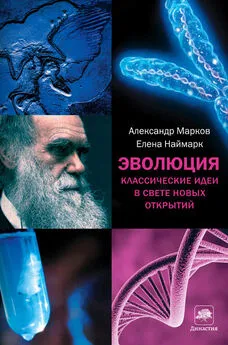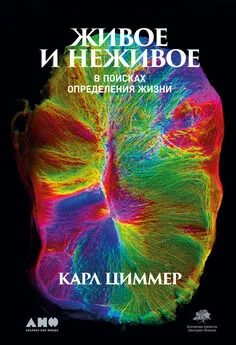Карл Циммер - Эволюция: Триумф идеи
- Название:Эволюция: Триумф идеи
- Автор:
- Жанр:
- Издательство:Альпина нон-фикшн
- Год:2012
- Город:Москва
- ISBN:978-5-91671-138-7
- Рейтинг:
- Избранное:Добавить в избранное
-
Отзывы:
-
Ваша оценка:
Карл Циммер - Эволюция: Триумф идеи краткое содержание
Эволюция: Триумф идеи - читать онлайн бесплатно ознакомительный отрывок
Интервал:
Закладка:
Barkow J.H., Cosmides L., Tooby J. The adapted mind: Evolutionary psychology and the generation of culture . New York: Oxford University Press, 1992.
Baron-Cohen S., Tager-Flusberg H., Cohen D.J. Understanding other minds: Perspectives from developmental cognitive neuroscience . Oxford & New York: Oxford University Press, 2000.
Buss D.M. The dangerous passion: Why jealousy is as necessary as love and sex . New York: Free Press, 2000.
____ Evolutionary psychology: The new science of the mind . Boston & London: Allyn & Bacon, 1999.
____, Haselton M.G., Shackelford Т.К., Bleske A.L., Wakefield J.C. “Adaptations, exaptations, and spandrels.” American Psychologist , 1998, 53: 533–548.
Cosmides L. “The logic of social exchange: Has natural selection shaped how humans reason? Studies with the Wason selection task.” Cognition , 1989, 31: 187–276.
Coyne J.A., Berry A. “Rape as an adaptation.” Nature , 2000, 404: 121–122.
Cummins D.D., Allen С. The evolution of mind . New York & Oxford: Oxford University Press, 1998.
Darwin C. The descent of man and selection in relation to sex . London: John Murray, 1871.
Deacon T.W. The symbolic species: The co-evolution of language and the brain . New York & London: Norton, 1997.
Dunbar R.I.M. Grooming, gossip and the evolution of language . London: Faber & Faber, 1996.
Emlen S.T. “An evolutionary theory of the family.” Proceedings of the National Academy of Sciences , 1995, 92: 8092–8099.
Fitch W.T. “The evolution of speech: A comparative review.” Trends in Cognitive Sciences , 2000, 4: 258–267.
Gagneux P., Wills C., Gerloff U., Tautz D., Morin P.A., Boescb C., et al. “Mitochondrial sequences show diverse evolutionary histories of African hominoids.” Proceedings of the National Academy of Sciences , 1999, 96: 5077–5082.
Gould S.J. “The pleasures of pluralism.” New York Review of Books , June 26, 1997, 46–52.
____, Lewontin R.C. “The spandrels of San Marco and the Panglossian paradigm: A critique of the adaptationist programme.” Proceeding of the Royal Society of London Series B, 1979, 205: 581–598.
Hare В., Call J., Agnetta В., Tomasello M. “Chimpanzees know what conspecifics do and do not see.” Animal Behaviour , 2000, 59: 771–785.
Hauser M. Wild minds: what animals really think . New York: Henry Holt, 2000.
Holden C. “No last word on language origins.” Science , 1998, 282: 1455–1459.
Hrdy S.B. Mother nature: A history of mothers, infants, and natural selection . New York: Pantheon Books, 1999.
Johanson D.C., Edgar B. From Lucy to language . New York: Simon & Schuster, 1996.
Kegl J. “The Nicaraguan sign language project: An overview.” Signpost , 1994, 7: 24–31.
____, Senghas A., Coppola M. “Creation through contact: Sign language emergence and sign language change in Nicaragua.” In: DeGraff M., ed., Language contact and language change: The intersection of language acquisition, Creole genesis, and diachronic syntax . Cambridge, Mass.: MIT Press, 1999, pp. 179–237.
Klein R.G. The human career: Human biological and cultural origins . Chicago: University of Chicago Press, 1999.
Miller G.F. The mating mind: How sexual choice shaped the evolution of human nature . New York: Doubleday, 2000.
Nowak M.A., Krakauer D.C. “The evolution of language.” Proceedings of the National Academy of Sciences , 1999, 96: 8028–8033.
____, Krakauer D.C., Dress A. “An error limit for the evolution of language.” Proceedings of the Royal Society of London, Series B: Biological Sciences , 1999, 266: 2131–2136.
O’Connell J.F., Hawkes K., Blurton Jones N.G. “Grandmothering and the evolution of Homo erectus.” Journal of Human Evolution , 1999, 36: 461–485.
Osborne L. “A linguistic big bang.” New York Times Magazine , October 24, 1999: 84–89.
Penton-Voak I.S., Perrett D.I., Castles D.L., Kobayashi Т., Burt D.M., Murray L.K., et al. “Menstrual cycle alters face preference”. Nature , 1999, 399: 741–742.
Perrett D.I., Lee K.J., Penton-Voak I., Rowland D., Yoshikawa S., Burt D.M., et al. “Effects of sexual dimorphism on facial attractiveness.” Nature , 1998, 394: 884–887.
Perrett D.I., May K.A., Yoshikawa S. “Facial shape and judgements of female attractiveness.” Nature , 1994, 368: 239–242.
Pinker S. How the mind works . New York: Norton, 1997.
____ The language instinct . New York: Morrow, 1994.
Richmond B.G., Strait D.S. “Evidence that humans evolved from a knuckle-walking ancestor.” Nature , 2000, 404: 382–386.
Sahlins M.D. The use and abuse of biology: An anthropological critique of sociobiology . Ann Arbor: University of Michigan Press, 1976.
Scheib J.E., Gangestad S.W., Thornhill R. “Facial attractiveness, symmetry and cues of good genes.” Proceedings of the Royal Society of London Series B , 1999, 266: 1913–1917.
Segerstråle U.C.O. Defenders of the truth: The battle for science in the sociobiology debate and beyond . New York: Oxford University Press, 2000.
Singh D. “Adaptive significance of female physical attractiveness: Role of waist-to-hip ratio”. Journal of Personality and Social Psychology , 1993, 65: 293–307.
Tattersall I., Schwartz J.H. Extinct humans . Boulder, Colo.: Westview Press, 2000.
Thornhill R., Gangestad S.W. “Facial attractiveness.” Trends in Cognitive Sciences , 1999,3:452–460.
____, Møller A.P. “Developmental stability, disease and medicine.” Biological Reviews of the Cambridge Philosophical Society , 1997, 72: 497–548.
____, Palmer C. A natural history of rape: Biological bases of sexual coercion . Cambridge, Mass.: MIT Press, 2000.
de Waal F.B.M. “The chimpanzee’s service economy: Food for grooming.” Evolution and Human Behaviour , 1997, 18: 375–386.
Wedekind C., Seebeck Т., Bettens F., Paepke A.J. “МНС-dependent mate preferences in humans.” Proceedings of the Royal Society of London Series B , 1995, 260: 245–249.
Whiten A. “Social complexity and social intelligence.” In Bock G., Goode J., Webb K., et al. The nature of intelligence . New York: Wiley, 2000, pp. 185–201.
____, Byrne R.W. Machiavellian intelligence II: Extensions and evaluations . London & New York: Cambridge University Press, 1997.
____, Goodall J., McGrew W.C., Nishida Т., Reynolds V., Sugiyama Y., et al. “Cultures in chimpanzees.” Nature , 1999, 399: 682–685.
Wilson E.O. Sociobiology: The new synthesis . Cambridge, Mass.: Belknap Press, 1975.
Wright R. The moral animal: Evolutionary psychology and everyday life . New York: Pantheon Books, 1994.
Bertranpetit J. “Genome, diversity, and origins: The Y chromosome as a storyteller.” Proceedings of the National Academy of Sciences , 2000, 97: 6927–6929.
Blackmore S.J. The meme machine . Oxford & New York: Oxford University Press, 1999.
Cavalli-Sforza L.L. Genes, peoples, and languages . New York: North Point Press, 2000.
Chauvet J-M., Brunel-Deschamps E., Hillaire C. Dawn of art: The Chauvet Cave, the oldest known paintings in the world . New York: Abrams, 1996.
Dyson G. Darwin among the machines: The evolution of global intelligence . Reading, Mass.: Addison-Wesley, 1997.
Ehrlich P. Human natures . Washington, D.C.: Island Press, 2000.
Holden C., Mace R. “Phylogenetic analysis of the evolution of lactose digestion in adults.” Human Biology , 1997, 69: 605–628.
Klein R.G. The human career: Human biological and cultural origins . Chicago: University of Chicago Press, 1999.
Krings M., Capellia C., Tschentscher F., Geisert H., Meyer S., von Haeseler A., et al. “А view of Neandertal genetic diversity.” Nature Genetics , 2000, 26: 144–146.
____, Geisert H., Schmitz R.W., Krainitzki H., Pääbo S. “DNA sequence of the mitochondrial hypervariable region II from the neanderthal type specimen.” Proceedings of the National Academy of Sciences , 1999, 96: 5581–5585.
____, Stone A., Schmitz R.W., Krainitzki Н., Stoneking М., Pääbo S. “Neandertal DNA sequences and the origin of modern humans.” Cell , 1997, 90: 19–30.
Lewontin R.C. Human diversity . New York: Freeman, 1995.
Mithen S.J. The prehistory of the mind: A search for the origins of art, religion and science . London: Thames & Hudson, 1996.
Nemecek S. “Who were the first Americans?” Scientific American , 2000, 283: 80–87.
Ovchinnikov I.V., Gotherstrom A., Romanova G.E, Kharitonov V.M., Liden K., Goodwin W. “Molecular analysis of Neanderthal DNA from the northern Caucasus.” Nature , 2000, 404: 490–493.
Pääbo S. “Human evolution.” Trends in Cell Biology , 1999, 9: 13–16.
____, “Neolithic genetic engineering.” Nature , 1999, 398: 194–195.
Richards M.P., Pettitt P.B., Trinkaus E., Smith F.H., Paunovic M., Karavanic I. “Neanderthal diet at Vindija and Neanderthal predation: The evidence from stable isotopes.” Proceedings of the National Academy of Sciences , 2000, 97: 7663–7666.
Shen P., Wang F., Underhill P.A., Franco C., Yang W.H., Roxas A., et al. “Population genetic implications from sequence variation in four Y chromosome genes.” Proceedings of the National Academy of Sciences , 2000, 97: 7354–7359.
Shreeve J. The Neandertal enigma: Solving the mystery of modern human origins . New York: Morrow, 1995.
Tattersall I. Becoming human: Evolution and human uniqueness . New York: Harcourt Brace, 1998.
Zimmer C. “After you, Eve”. Natural History , March 2001, 32–35.
Behe M.J. Darwin’s black box: The biochemical challenge to evolution . New York: Free Press, 1996.
Cartmill M. “Oppressed by evolution.” Discover , March 1998, 78–83.
Chen L., DeVries A.L., Cheng C.H. “Evolution of antifreeze glycoprotein gene from a trypsinogen gene in Antarctic notothenioid fish.” Proceedings of the National Academy of Sciences , 1997, 94: 3811–3816.
Cheng C.H., Chen L. “Evolution of an antifreeze glycoprotein.” Nature , 1999, 401, 443–144.
Darwin C. Autobiography and selected letters . New York: Dover Publications, 1958.
Dawkins R. Unweaving the rainbow: Science, delusion, and the appetite for wonder . Boston: Houghton Mifflin, 1998.
Dupree A.H. Asa Gray. 1810–1888. Cambridge, Mass.: Harvard University Press, 1959.
Gasman D. The scientific origins of National Socialism: social Darwinism in Ernst Haeckel and the German Monist League . New York: Elsevier, 1971.
Gould S.J. Rocks of ages: Science and religion in the fullness of life . New York: Ballantine, 1999.
____ Non-overlapping Magisterial Skeptical Inquirer , 1999, 23: 55–61.
Haeckel E.H.P.A., Lankester E.R. The history of creation: or, The development of the earth and its inhabitants by the action of natural causes . London: Henry S. King, 1876.
Читать дальшеИнтервал:
Закладка:
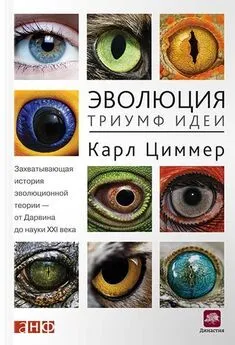
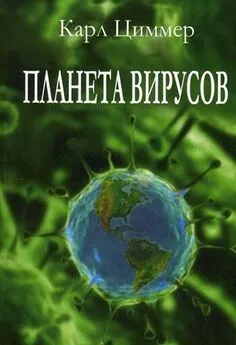
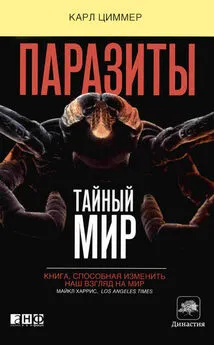

![Карл Циммер - Паразит – царь природы [Тайный мир самых опасных существ на Земле] [litres]](/books/1067054/karl-cimmer-parazit-car-prirody-tajnyj-mir-sam.webp)
![Карл Циммер - Она смеется, как мать [Могущество и причуды наследственности] [litres]](/books/1075049/karl-cimmer-ona-smeetsya-kak-mat-moguchestvo-i-pr.webp)
